A Vocabulary of Embellishment in Boho Fashion
New to Luneville embroidery?
Start with the chain stitch—my free visual guide shows you exactly how
When people talk about boho style, they often focus on silhouette — maxi skirts, wide sleeves, flowing dresses. But what makes boho recognisable isn’t just the shape. It’s the surface. Embellishment has always been central to the aesthetic, bringing texture, cultural memory, and movement to every piece.
This article offers a closer look at the types of embellishment most associated with boho fashion — from historical technique to runway interpretation. You'll see how these craft-based details continue to define the tactile identity of boho, season after season.
Embroidery
Embroidery is one of the most enduring embellishment techniques in boho fashion. Whether floral, geometric, or symbolic, these motifs often reference folk traditions from Eastern Europe, India, or Mexico. In vintage boho, embroidery framed tunic necklines or skirt borders; in contemporary collections, it moves freely across dresses, denim, or even leather.
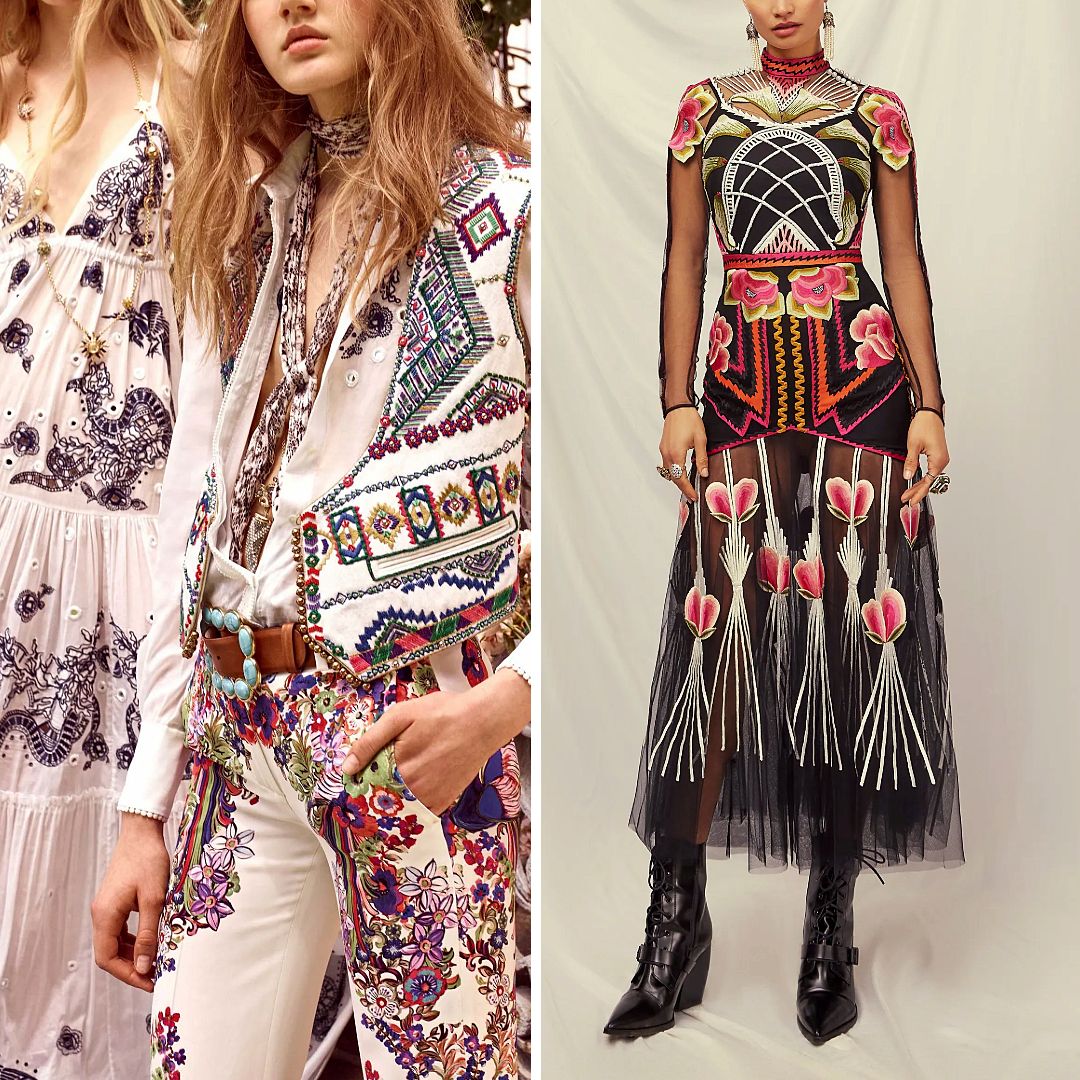
For example, Temperley London Fall 2023 featured a sheer tulle dress richly embroidered with bold botanical motifs in vivid colours, blending structure with a romantic, layered aesthetic. In Roberto Cavalli Resort 2017, embroidery appeared on trousers, shirts, and vests, mixing floral and folkloric designs with confident colour and texture—an unmistakable nod to the 1970s spirit at the heart of boho style.
Fringe
Fringe adds texture, rhythm, and a sense of motion to garments — especially on outerwear, bags, and dresses. Long associated with 1970s boho and Western styling, fringe also speaks to movement-based traditions in North Africa and the Americas.
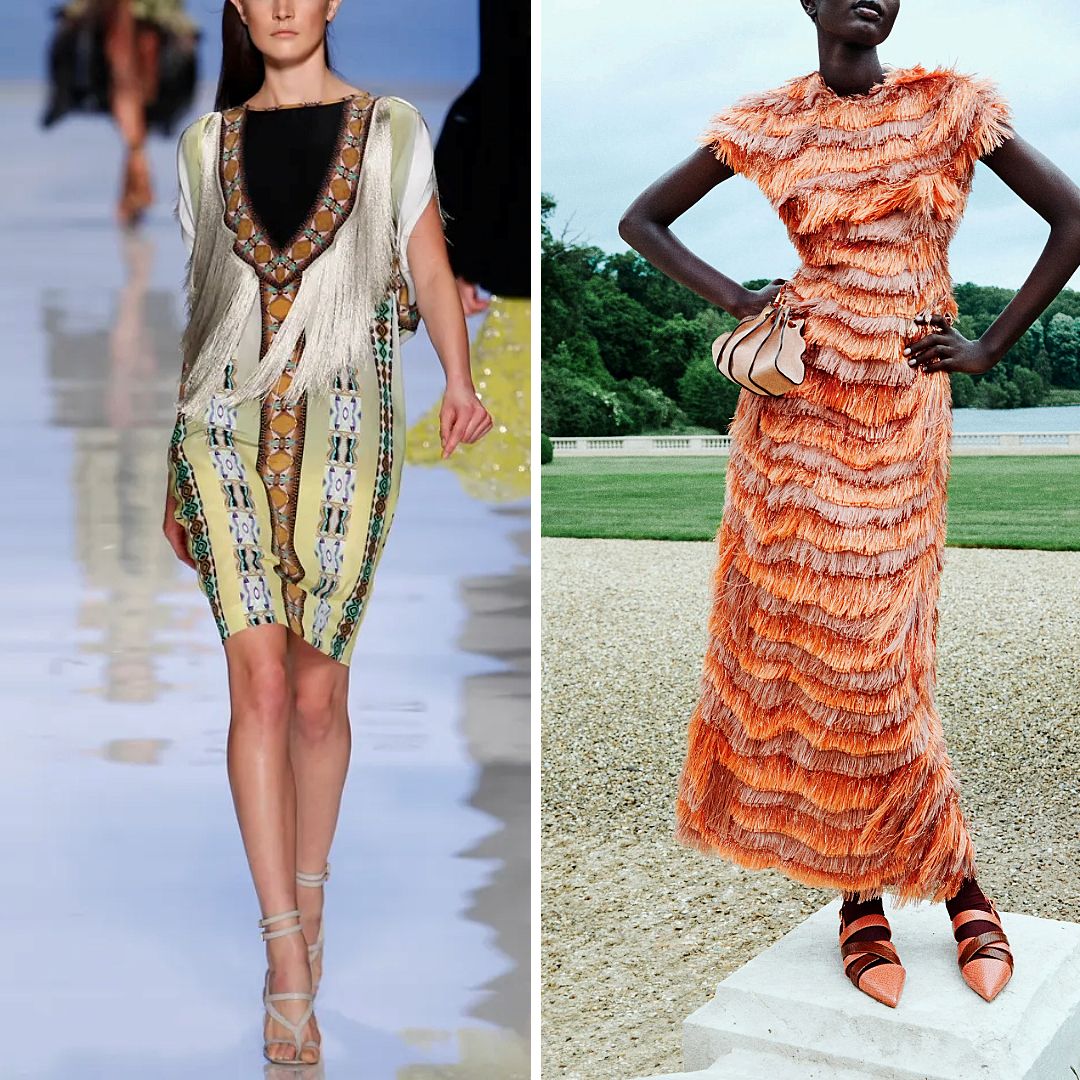
On the runway, Etro Spring 2012 featured a geometric-print bodycon dress trimmed with cascading fringe around the neckline, creating kinetic movement with every step. More recently, Ulla Johnson Resort 2026 introduced orange-gold jacquard dresses with uneven fringe that shimmered as the model walked. In both cases, fringe was used to create not just texture, but energy.
Tassels and Braided Trims
Tassels and braided cords add ornamental weight to garments — often found at neckline ties, hems, or bag straps. These tactile details draw from Middle Eastern, Balkan, and North African textile traditions and remain a strong visual cue in globally inspired boho looks.
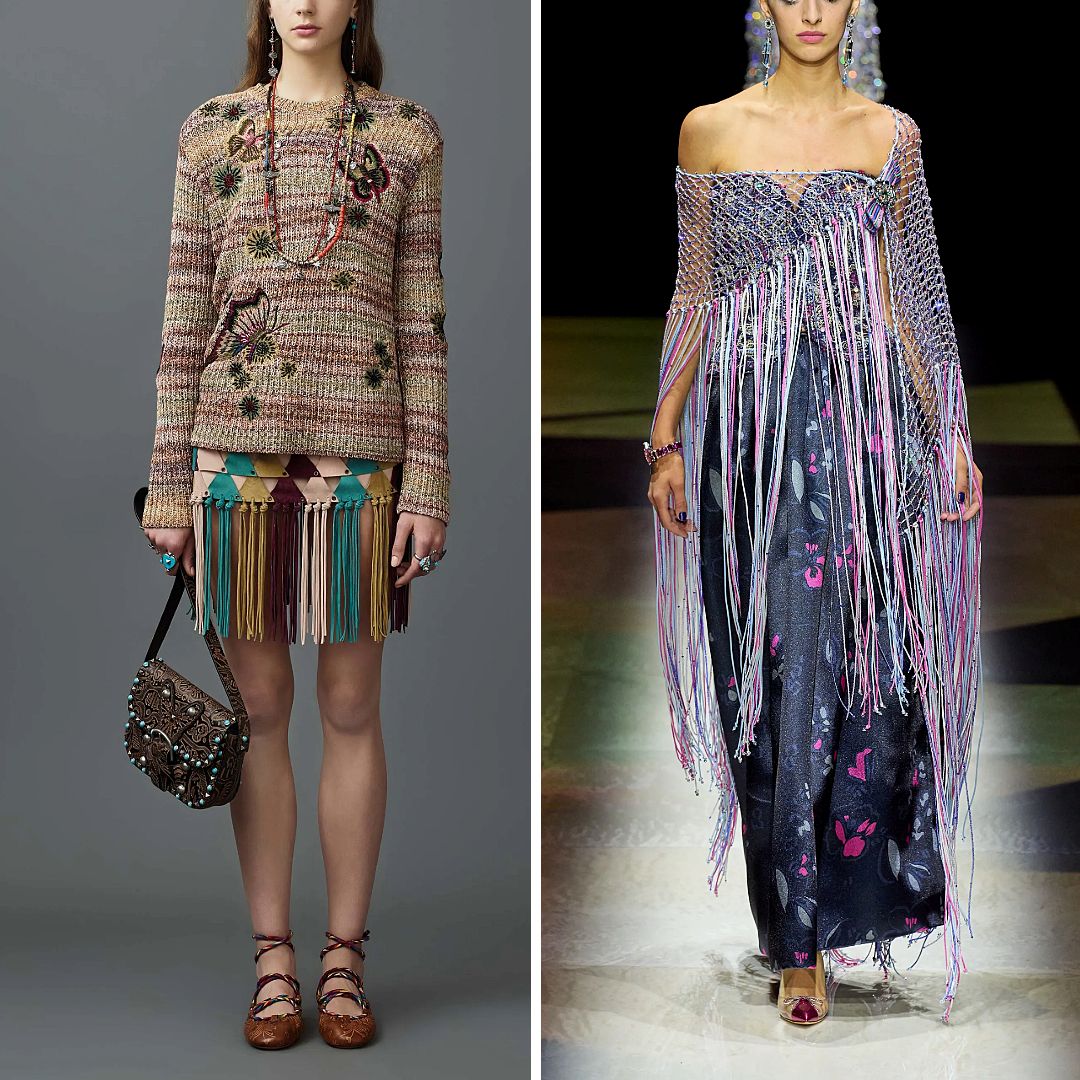
In Armani Privé Fall 2022 Couture, long pastel tassels emerged from a handwoven mesh shawl layered over a floral satin gown, echoing artisanal craftsmanship through a high-fashion lens. Meanwhile, Valentino Resort 2017 paired leather fringe and multicoloured tassels with a harlequin-patterned mini skirt and embroidered knit, offering a playful yet rich interpretation of folk influences in modern styling. In both examples, the trims bring rhythm and a sense of tactility, reinforcing boho’s affinity for texture and movement.
Beads and Sequins
Boho fashion typically avoids glossy, high-glam sequins — instead, it embraces beads and flat sequins in natural palettes or floral configurations. These are used to catch the light subtly, enhancing chiffon, mesh, or net bases.
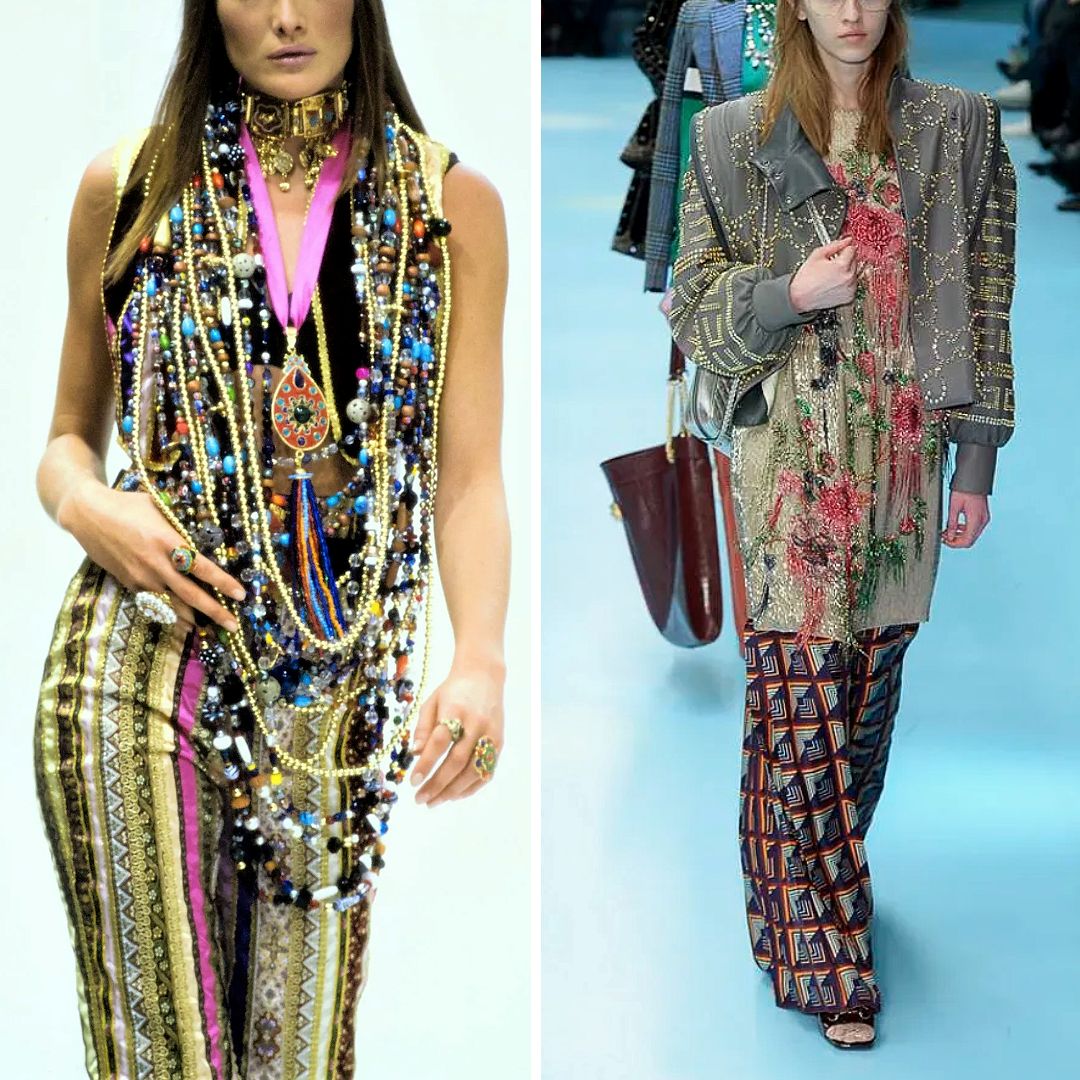
Dolce & Gabbana Spring 1993 Ready-to-Wear showed densely layered beaded necklaces over jacquard and stripe trousers, creating a nomadic, talismanic look. In contrast, Gucci Fall 2018 featured sequin and bead-embroidered floral designs on sheer tunics layered under boxy jackets—combining folk motifs with a maximalist approach while keeping the embellishment organic and textured.
Appliqué
Appliqué involves layering shapes of fabric — velvet, lace, cotton, or even organza — and securing them with visible or invisible stitching. This technique creates contrast in both material and shape, often forming symbolic or botanical designs.

Christopher Kane Resort 2018 featured vibrant neon floral appliqué across mesh tops and denim trousers, merging haute craft with a playful, streetwear-inspired edge. Meanwhile, Au Jour Le Jour Fall 2017 took a whimsical approach: wool appliqué patches featuring fruit and animals were sewn across a cream turtleneck, adding a storybook charm to the look.
Patchwork
Patchwork in boho doesn’t always follow formal quilting structures — it often takes the form of irregular or raw-edged paneling. The technique reflects reuse, repair, and personality — central ideas in boho’s connection to slow fashion.
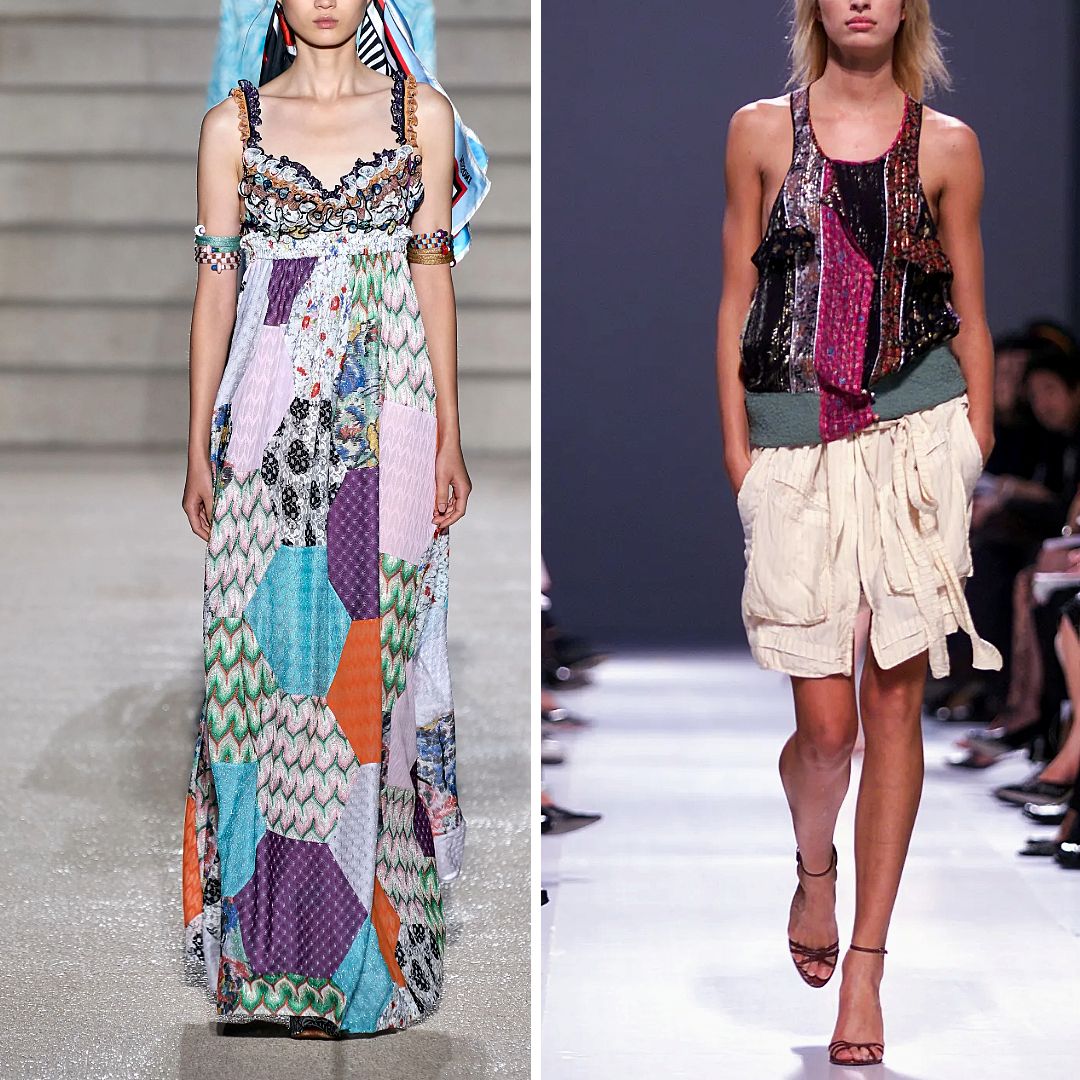
Missoni Spring 2020 presented a flowing maxi dress composed of vibrant patchwork prints, combining zigzag textures, florals, and geometrics in a free-spirited, tactile composition. Balenciaga Spring 2002 offered a contrasting take with slinky tops pieced from asymmetric printed strips, evoking both deconstruction and homespun craft. Whether subtle or bold, patchwork signals effort and individuality.
Lace Insertions
Lace in boho isn’t about full-lace garments. It’s often inserted into garments as a visual break — a sheer panel, a cuff edge, or a skirt stripe. This technique adds lightness and draws from Edwardian, prairie, and folk costume aesthetics.
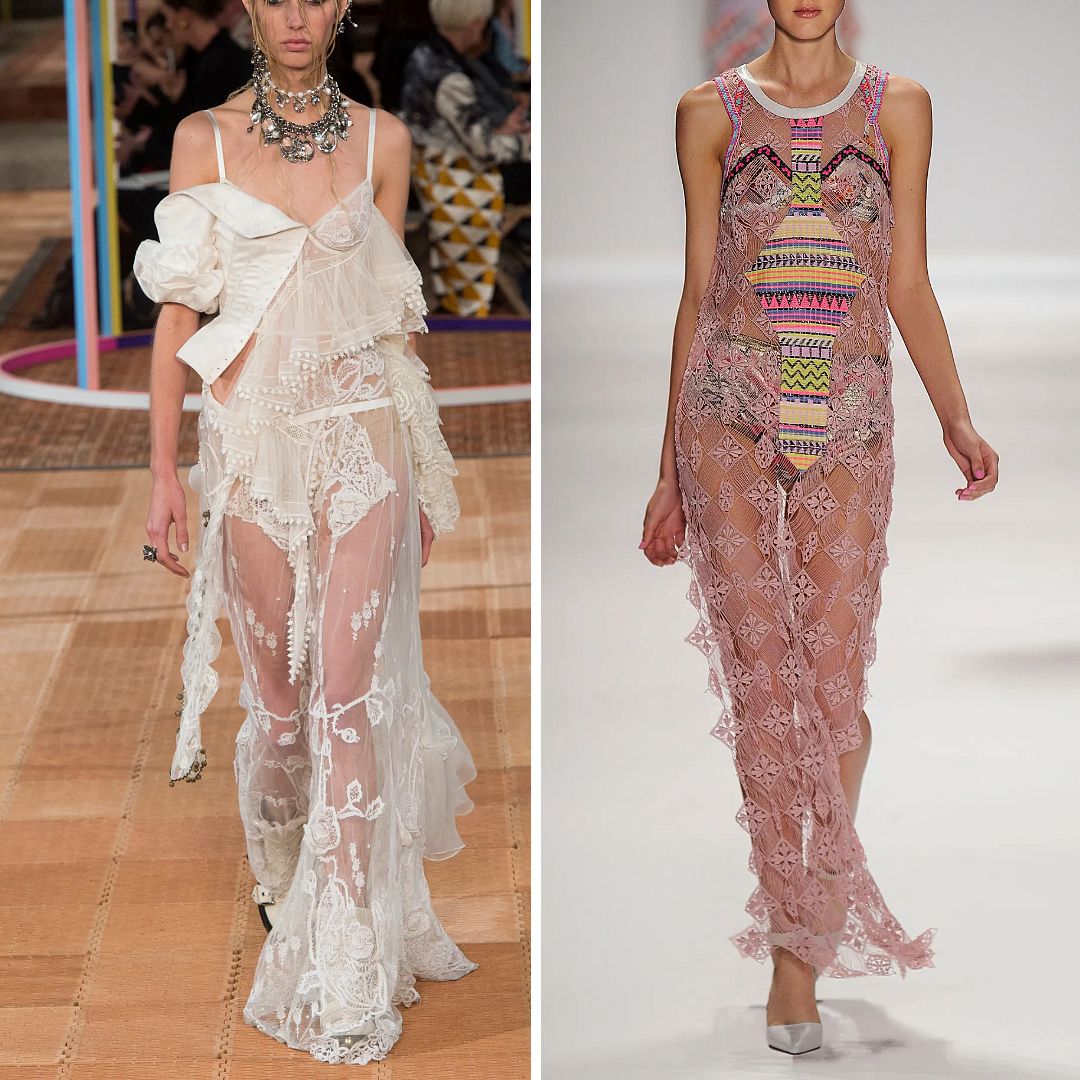
In Alexander McQueen Spring 2017, white lace was combined with tulle and organza in layered panels that echoed antique undergarments—distorted, deconstructed, yet delicate. Custo Barcelona Spring 2014 used geometric lace motifs combined with a brightly embroidered central panel—creating a bold interplay of texture, transparency, and colour.
Boho style doesn’t rely on silhouette alone. It’s defined by how a garment feels, moves, and shows the work behind it — and that work often comes through embellishment. From hand-embroidered necklines to irregular patchwork panels or raw tassel trims, each element speaks to a different craft tradition brought into fashion.
The richness of boho lies in its surface — not as decoration, but as structure, memory, and expression. These embellishment techniques are more than aesthetic choices. They’re how boho communicates what it values: texture, tactility, and time.
Exploring Boho Fashion in Depth
Boho is set to return in 2026 — but not in the usual commercial way. For designers, stylists, and creatives, it’s a chance to revisit a style that combines freedom, heritage, and craft. That’s why I’m running a series of articles unpacking what boho really means — beyond clichés.
I’m writing from the perspective of a textile artist and embroidery designer, exploring boho not just as a style, but as a design language: full of references, rooted techniques, and evolving visual codes.
Boho Style: A Brief Fashion History
Where the aesthetic comes from — and how it’s been shaped by art, politics, and pop culture.A Vocabulary of Embellishment in Boho Fashion
What details make boho recognisable? From embroidery to fringe, a breakdown of core techniques.Boho Motifs and Their Meanings
Symbols at the heart of boho design — from florals and paisley to birds and celestial imagery.
More coming soon.
Written By
Ksenia Semirova
MA Textiles
An experienced hand embroidery and textile artist based in Hove, UK. Professionally practicing since 2021, mastering various techniques.
Also a fine artist and visual researcher, exhibiting her works across the UK and internationally.
Join my mailing list
Get the latest and greatest updates to your inbox!